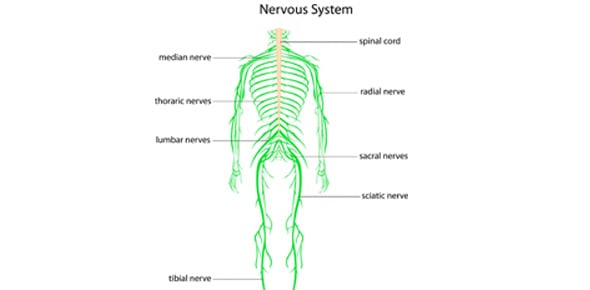Types Of Neuroglia In The CNS/Pns

- 1.
Produce the myelin sheaths around PNS axons
- A.
Astrocytes
- B.
Schwann cells
- C.
Microglia
- D.
Ependymal cells
- E.
Oligodendrocytes
Correct Answer
B. Schwann cellsExplanation
Schwann cells are responsible for producing the myelin sheaths around axons in the peripheral nervous system (PNS). Myelin sheaths are crucial for the proper functioning of nerve impulses, as they act as insulators that allow for faster and more efficient transmission of signals along the axons. Schwann cells wrap around individual axons, forming multiple layers of myelin to create the sheaths. This process is known as myelination. Unlike oligodendrocytes, which produce myelin in the central nervous system, Schwann cells specifically play a role in myelinating PNS axons.Rate this question:
-
- 2.
Have few processes and produce a myelin sheath in CNS; each can myelinate parts of several axons
- A.
Astrocytes
- B.
Oligodendrocytes
- C.
Microglia
- D.
Ependymal cells
- E.
Schwann Cells
Correct Answer
B. OligodendrocytesExplanation
Oligodendrocytes are responsible for producing the myelin sheath in the central nervous system (CNS). Unlike Schwann cells, which myelinate axons in the peripheral nervous system (PNS), oligodendrocytes can myelinate parts of several axons. This means that one oligodendrocyte can provide myelin sheath to multiple axons, making them efficient in covering a larger area of the CNS. Astrocytes, microglia, and ependymal cells have different functions and are not directly involved in myelination.Rate this question:
-
- 3.
Small, phagocytic neuroglia that produce the nervous system by engulfing microbes and removing debris of dead cells
- A.
Astrocytes
- B.
Oligodendrocytes
- C.
Microglia
- D.
Ependymal cells
- E.
Schwann Cells
Correct Answer
C. MicrogliaExplanation
Microglia are small, phagocytic neuroglia that play a crucial role in the immune defense of the central nervous system. They are responsible for engulfing and removing microbes and debris from dead cells, helping to maintain the overall health and function of the nervous system. Unlike other types of neuroglia, such as astrocytes and oligodendrocytes, microglia are specifically specialized in immune responses within the central nervous system. Ependymal cells are involved in the production and circulation of cerebrospinal fluid, while Schwann cells are responsible for myelinating peripheral nerves.Rate this question:
-
- 4.
Star-shaped cells that perform several functions in support of neurons
- A.
Astrocytes
- B.
Oligodendrocytes
- C.
Microglia
- D.
Ependymal cells
- E.
Schwann cells
Correct Answer
A. AstrocytesExplanation
Astrocytes are star-shaped cells that perform several functions in support of neurons. They provide physical and metabolic support to neurons, regulate the chemical balance of the brain, and help in the formation of synapses. They also play a role in the repair and regeneration of neural tissue. Astrocytes are the most abundant type of glial cells in the central nervous system and are essential for the proper functioning of the brain.Rate this question:
-
- 5.
Line the brain ventricles and the central canal of the spinal cord; they secrete and aid in the circulation of cerebrospinal fluid and they form the blood-cerebrospinal fluid barrier
- A.
Astrocytes
- B.
Oligodendrites
- C.
Ependymal cells
- D.
Schwann cells
- E.
Microglia
Correct Answer
C. Ependymal cellsExplanation
Ependymal cells are the correct answer because they line the brain ventricles and the central canal of the spinal cord. They secrete and aid in the circulation of cerebrospinal fluid, which helps to protect and nourish the brain and spinal cord. Additionally, ependymal cells form the blood-cerebrospinal fluid barrier, which regulates the exchange of substances between the blood and the cerebrospinal fluid.Rate this question:
-
Quiz Review Timeline +
Our quizzes are rigorously reviewed, monitored and continuously updated by our expert board to maintain accuracy, relevance, and timeliness.
-
Current Version
-
Mar 21, 2023Quiz Edited by
ProProfs Editorial Team -
Jun 30, 2010Quiz Created by
Meghan1129
 Back to top
Back to top


